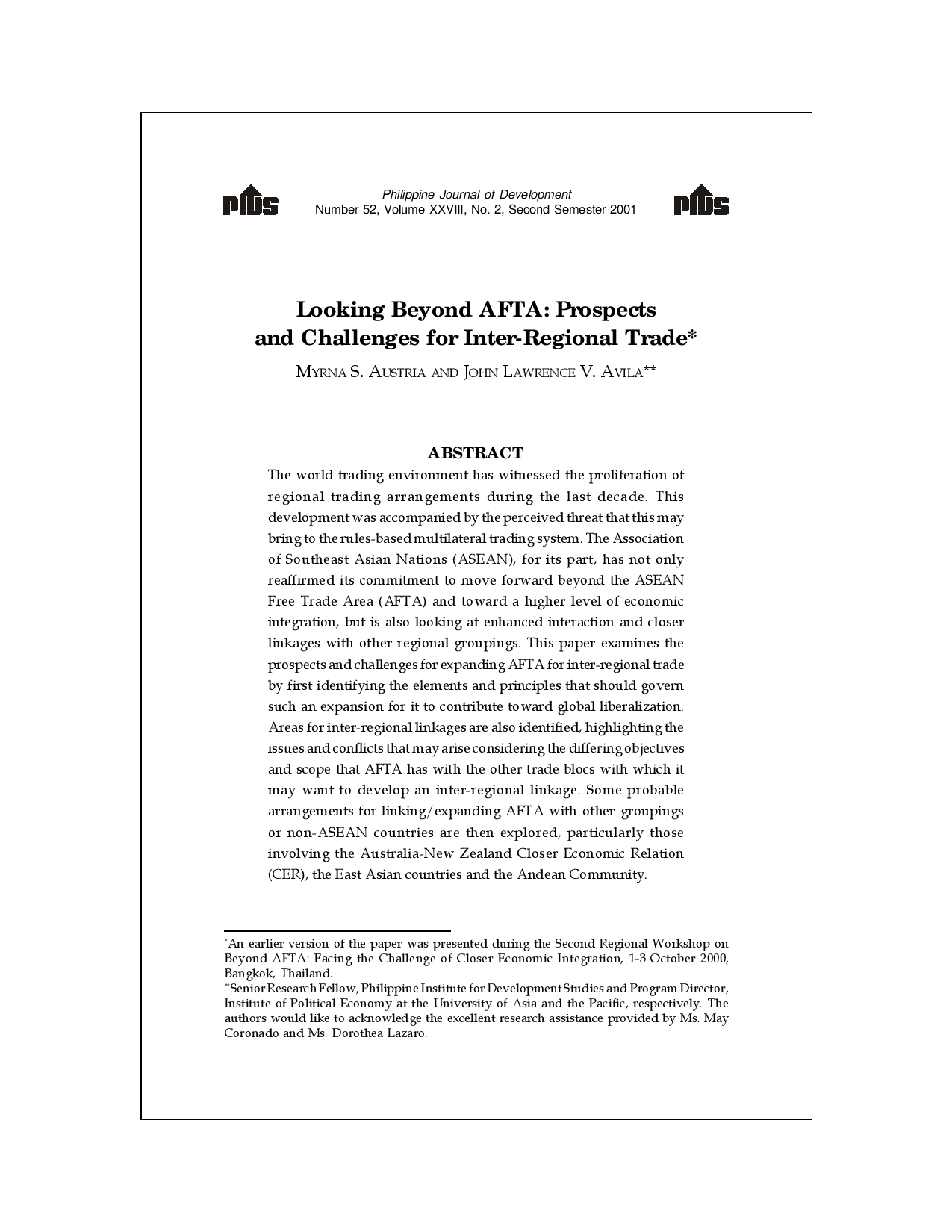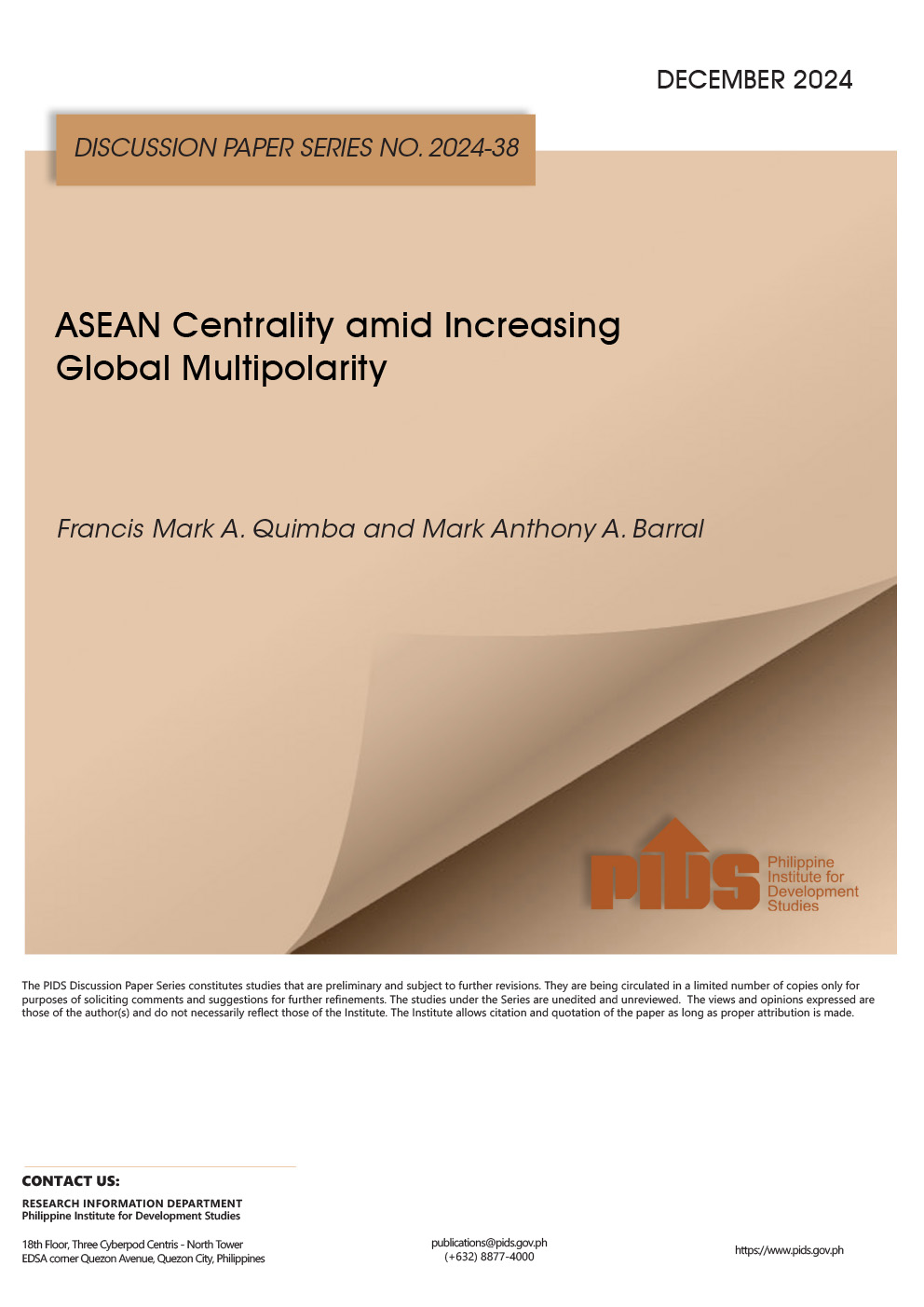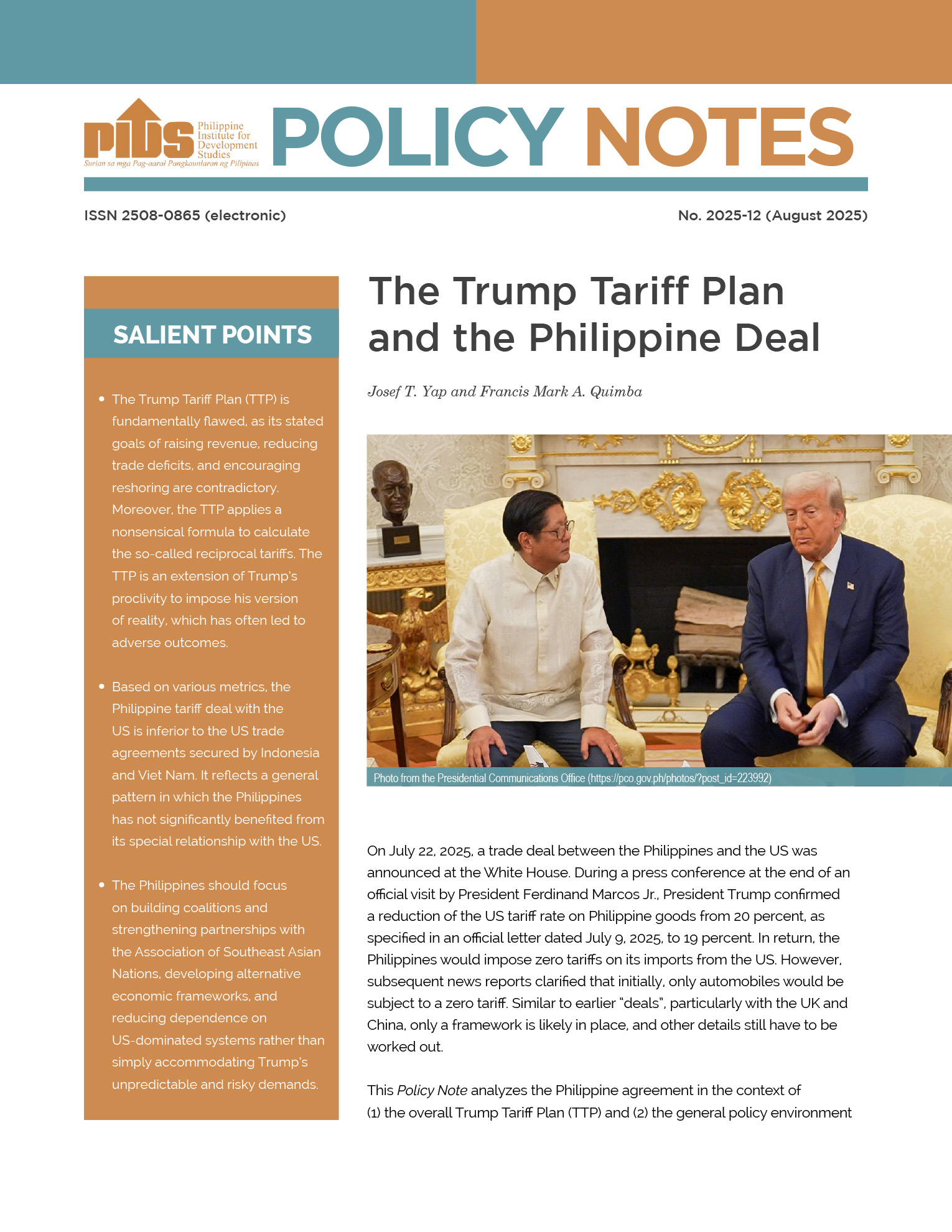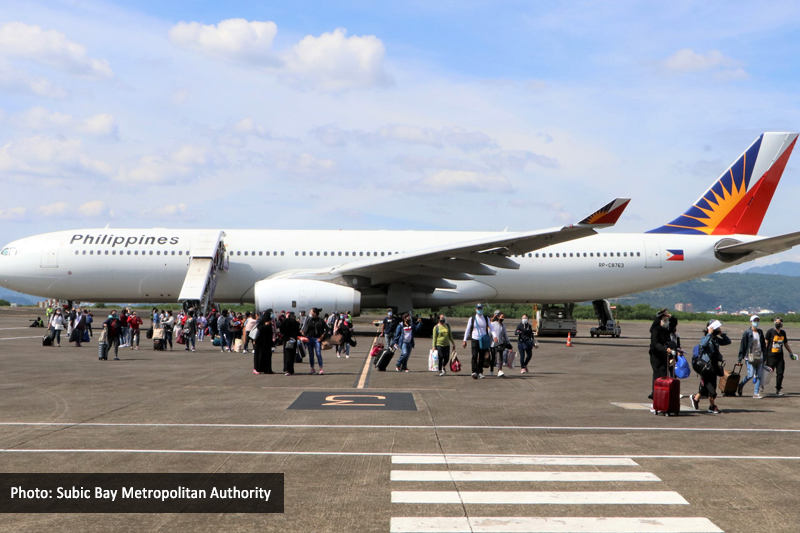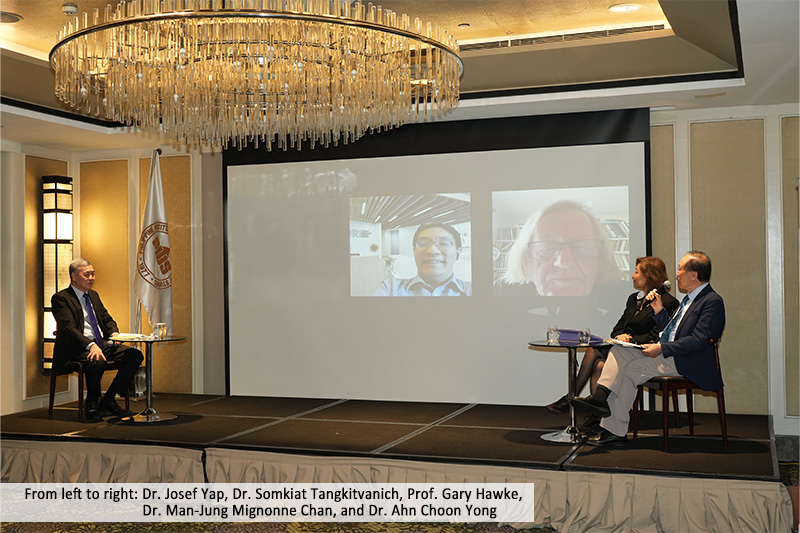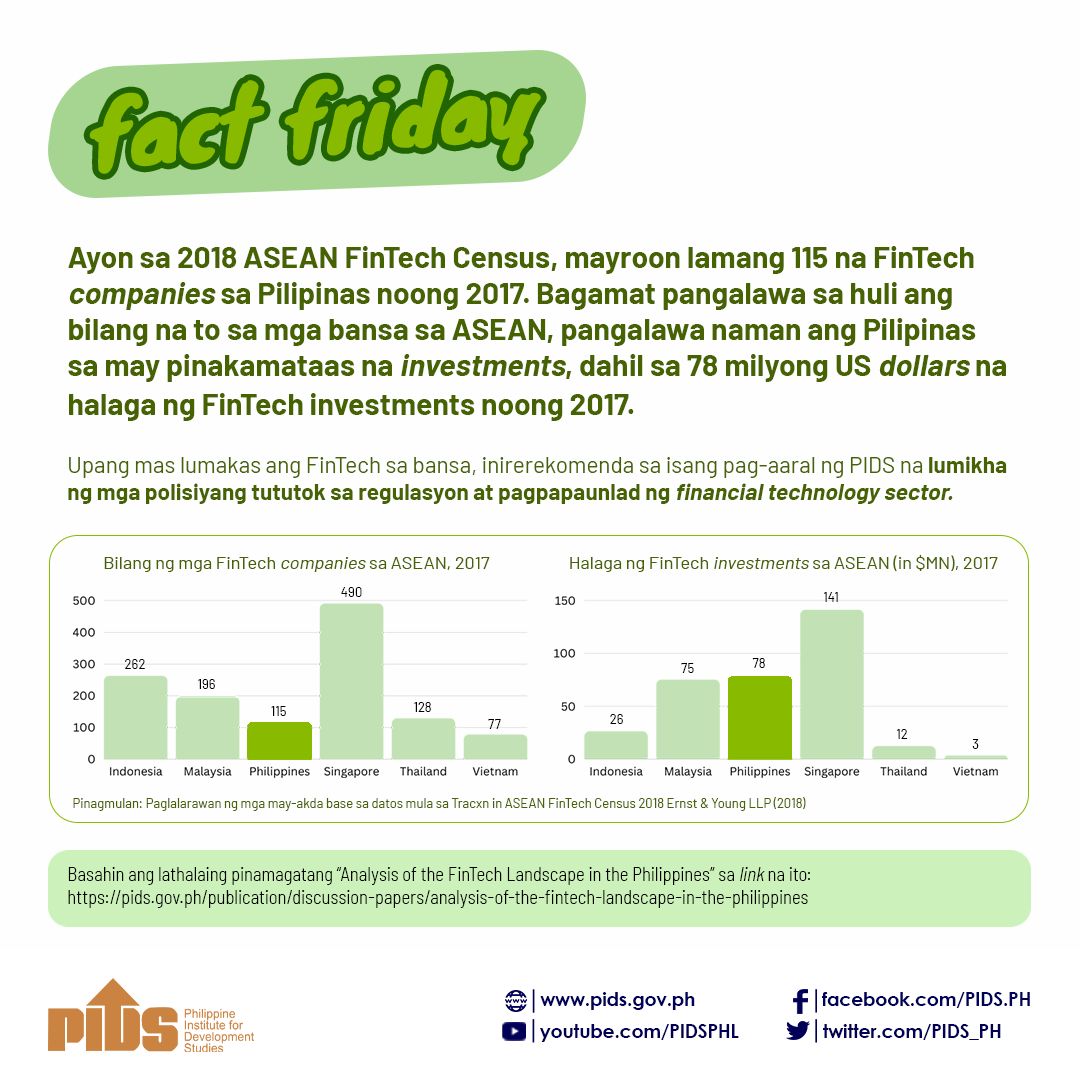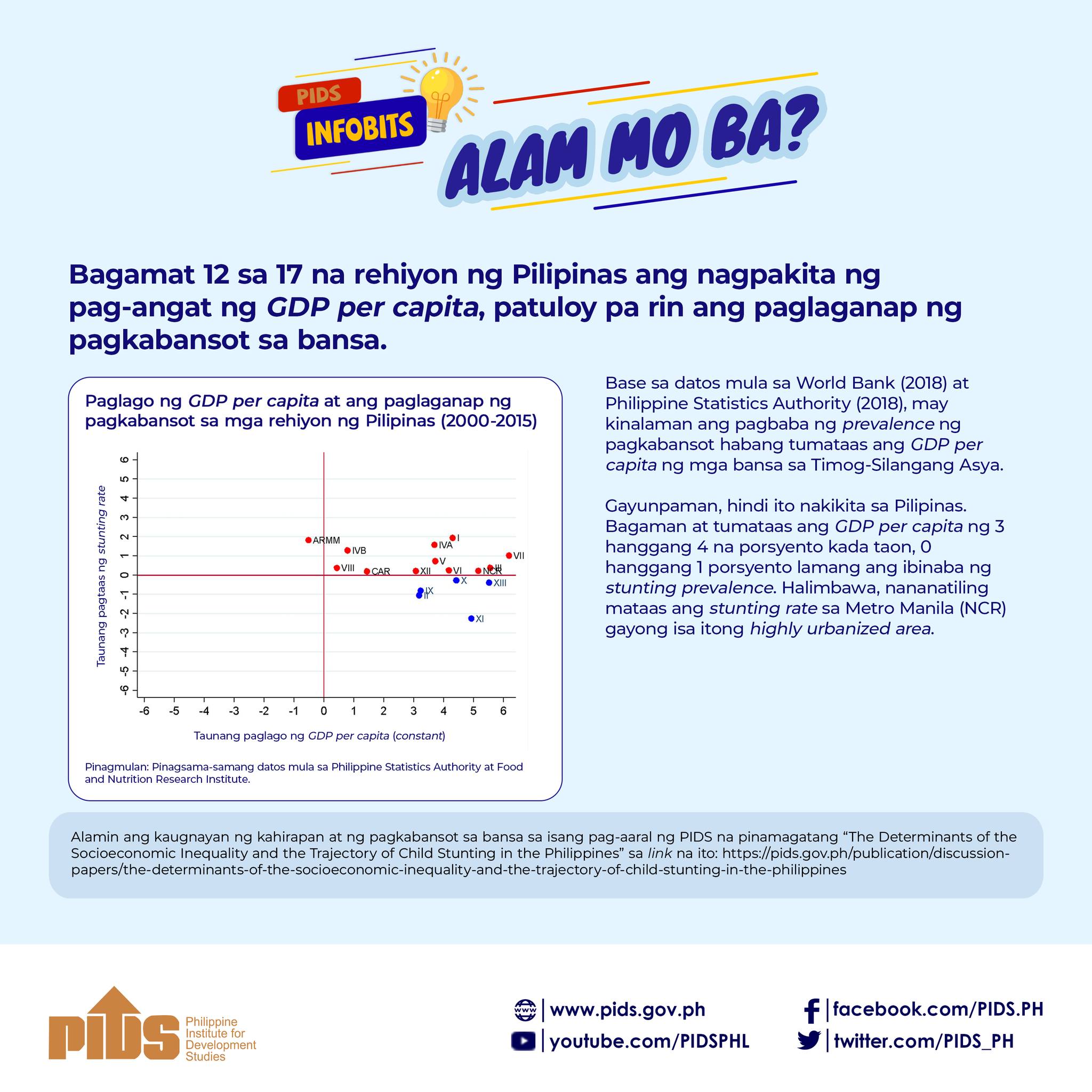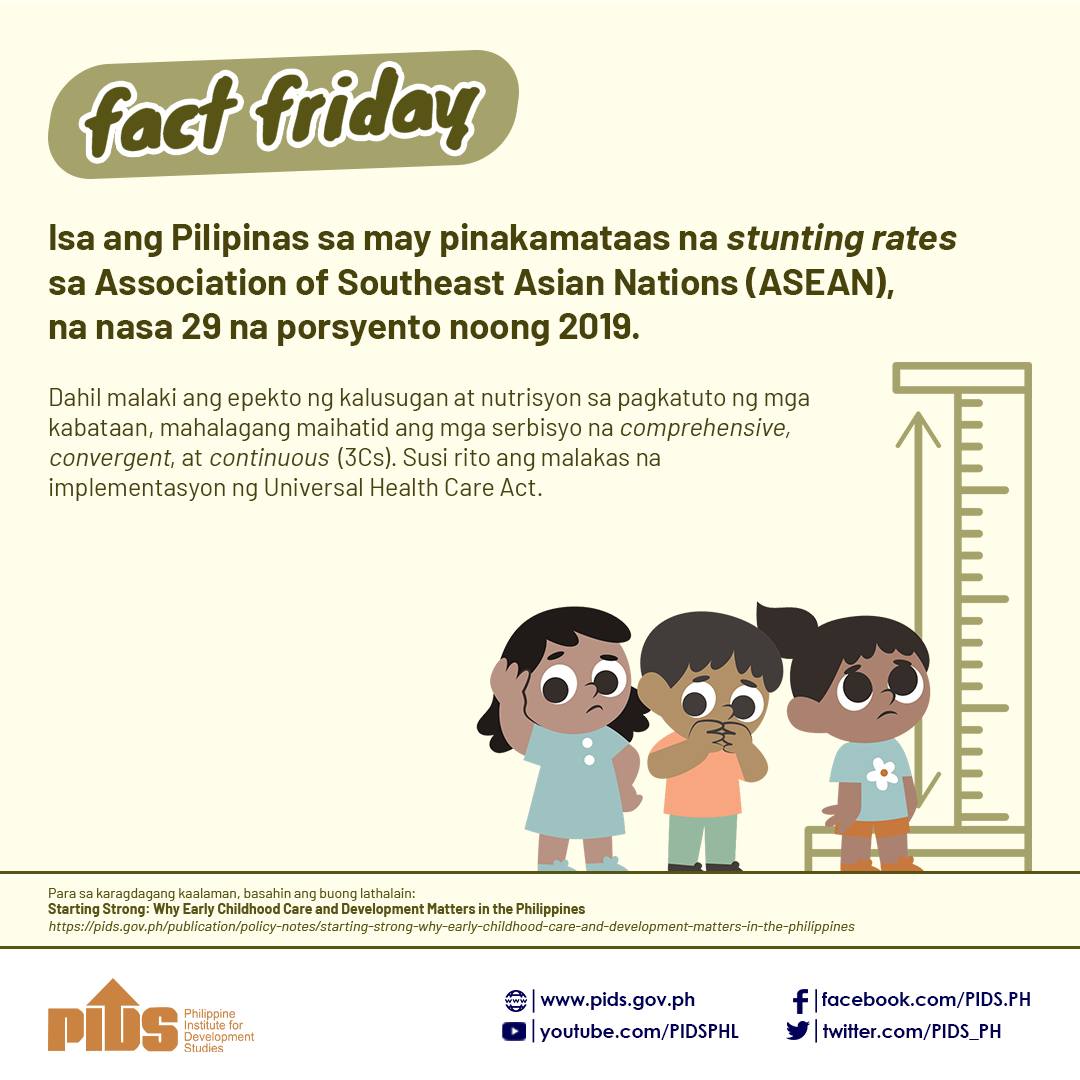The world-trading environment has witnessed the proliferation of regional trading arrangements during the last decade. This development has been accompanied by the perceived threat this may bring to the rules-based multilateral trading system. The Association of Southeast Nations (ASEAN), for its part, has not only reaffirmed its commitment to move forward beyond the ASEAN Free Trade Area (AFTA) and toward a higher level of economic integration, but is also looking at enhanced interaction and closer linkages with other regional groupings. This paper examines the prospects and challenges for expanding AFTA for inter-regional trade by first identifying the elements and principles that should govern such an expansion for it to contribute toward global liberalization. Areas for inter-regional linkages are also identified, highlighting the issues and conflicts that may arise considering the differing objectives and scope that AFTA has with the other trade blocs with which it may want to develop an inter-regional linkage. Some probable arrangements for linking/expanding AFTA with other groupings or non-ASEAN countries are then explored, particularly those involving the Australia-New Zealand Closer Economic Relation (CER), the East Asian Countries and the Andean Community.

